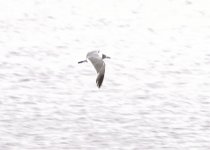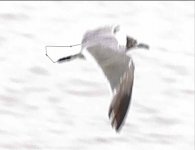Hello, Is this a Franklin or Laughing gull? My understanding is the Franklin is supposed to have white on the tip of the primaries, which this one does not seem to have; but the distance from the tip of the bill to the feet seems short for a laughing gull and it has a well defined half-hood.
Any thoughts?
Any thoughts?







